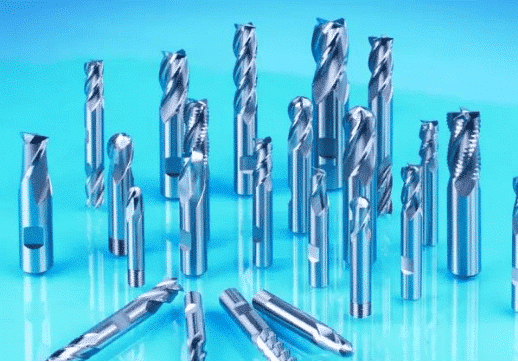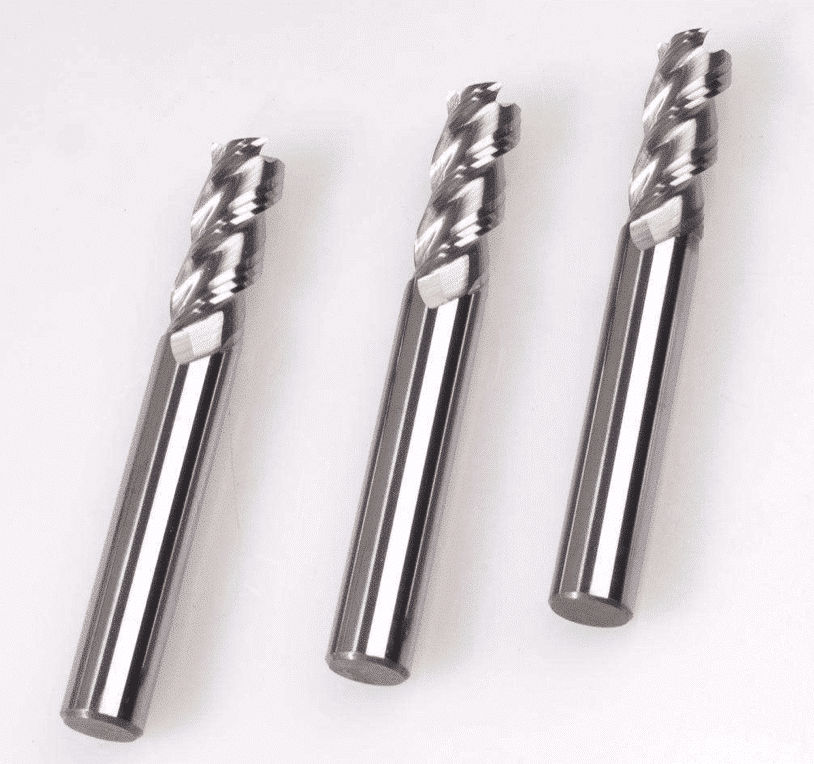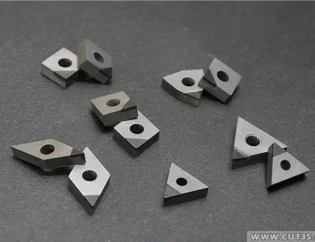Hard to Pick Out Suitable End Mills? These Basics May Help
The main cutting edge of the end mill is a cylindrical surface, and the cutting edge on the end face is a sub-blade. When the end mill without the center edge is working, it cannot make a feed motion along the axial direction of the milling cutter. End mills are currently widely used in various sectors such as automobile manufacturing, logistics, molds, machinery, etc., and because of the increasing use of various aspects, the application requirements are also increasing. Therefore, various problems that are common in the use of end mill applications are summarized and answered.

[Q] Comment rectifier le Ø12 des deux dents de la fraise en bout ?
[Réponse] Tout d'abord, la meule doit être meulée, le bord du meulage est un peu incliné, la fraise, la lame doit faire attention, l'extérieur doit être plus haut que l'intérieur… La pente à l'intérieur ne doit pas être trop oblique, probablement juste comme ça, cela doit encore moudre plus de pratique uniquement.
[Q] Qu'est-ce qu'une fraise en bout et qu'est-ce qu'une fraise à disque ? Quelle est la différence?
[Réponse] Les fraises en bout sont généralement utilisées pour le fraisage des faces d'extrémité, plutôt que les fraises à rainurer pour le fraisage des fentes. La fraise à disque est principalement utilisée pour le fraisage de grandes faces d'extrémité, car le fraisage droit de la fraise à disque est généralement grand, la face d'extrémité de fraisage est plus rapide pour le fraisage et la fraise à lame de scie est généralement utilisée pour le fraisage.
[Q] Pourquoi la fraise en bout ne peut-elle pas couper verticalement ?
[Réponse] Lorsque la fraise en bout tourne, le milieu du bord inférieur est relativement statique. Il n'a pas d'usinabilité ni d'enlèvement de copeaux, il ne peut donc pas être coupé verticalement.
[Q] How is the feed rate of the Fraise en bout determined?
[Réponse] La sélection de la quantité de coupe doit être considérée avec des facteurs tels que l'outil, la pièce à usiner et la machine-outil. L'arête de coupe principale de la fraise en bout est l'arête périphérique. L'avance par dent est généralement d'environ 0,1 lors de la finition. La quantité est généralement choisie entre 0,25 et 0,3 mm. Plus précisément, il doit être adapté aux paramètres de coupe tels que la vitesse de coupe, la profondeur de coupe axiale et la profondeur de coupe radiale.

[Q] Quelle est la différence entre la fraise en bout et la fraise en bout à billes et son principe de sélection ?
[Réponse] Fraises en bout et fraises en bout sphérique, l'une est la tête sphérique, l'autre est le fond plat, la fraise en bout est principalement destinée à l'usinage conventionnel et la fraise en bout sphérique peut être utilisée pour le fraisage de la surface.
[Q] Quelle est la différence entre le collet pour la fraise en bout et le collet pour le taraud ? Devez-vous utiliser la poignée de l'entreprise lorsque vous appuyez sur ?
[Réponse] Bien que la pince pour maintenir la fraise en bout à queue droite puisse être utilisée pour maintenir le taraud pour le taraudage rigide, l'effet n'est pas bon, généralement le taraud de petit diamètre ne pose aucun problème ; la pince ER pour le taraud est dotée d'une rainure carrée C'est-à-dire que la fonction de limite à queue plate de la poignée du taraud est désormais disponible chez les fabricants d'outils généraux.
[Q] What is the difference between a reamer and an end mill?
[Answer] The reamer is a straight edge and the end mill is a spiral edge. The milling cutter has a bottom edge and the reamer does not! The reamer is used to finish the hole, while the milling cutter can be milled, washed, and side washed! Use is different!
[Q] Comment la vitesse d'alimentation de la fraise en bout est-elle déterminée ?
[Réponse] La sélection de la quantité de coupe doit être considérée avec des facteurs tels que l'outil, la pièce à usiner et la machine-outil. L'arête de coupe principale de la fraise en bout est l'arête périphérique. L'avance par dent est généralement d'environ 0,1 lors de la finition. La quantité est généralement choisie entre 0,25 et 0,3 mm. Plus précisément, il doit être adapté aux paramètres de coupe tels que la vitesse de coupe, la profondeur de coupe axiale et la profondeur de coupe radiale.
[Q] What are the steps for milling the end mill?
[Answer] First install the end mill, then move the end mill to the top of the workpiece to be milled, gently lick the upper surface of the workpiece with the end teeth of the end mill, and then lift the dial of the milling machine Zero; then move the end mill to the side of the workpiece, lower the end mill to the side of the workpiece, then gently lick the side of the workpiece with the side of the cutter, and set the handle dial in the corresponding direction to zero, then Start milling the steps. The depth of the knife is determined according to the size of the machining allowance, the strength of the material, and the size of the milling cutter. After eating from at least one knife, it is completed by dividing into several knives.
[Q] What is the difference between an end mill and a keyway cutter?
[Answer] The main difference between the end mill and the keyway cutter is that the end mill is used to machine flat or cylindrical surfaces, so its outer diameter is relatively loose, and the keyway cutter is used to machine the keyway. The outer diameter dimension directly affects the mating quality of the keyway and the key, so the tolerance is stricter; in addition, the keyway milling cutter has only two blade belts for machining holes, and the end mill has more than two blade belts. The end face of the end mill has a center hole, and the end face of the keyway cutter has no center hole. Therefore, the end mill is not able to feed directly down, deep down, and the center hole will withstand. The keyway cutter can be fed directly down. In addition, the keyway milling cutter, as the name implies, is used to mill the keyway, so the dimensional accuracy of the outer diameter is very high, and generally can reach an accuracy of about 0.01 mm.









